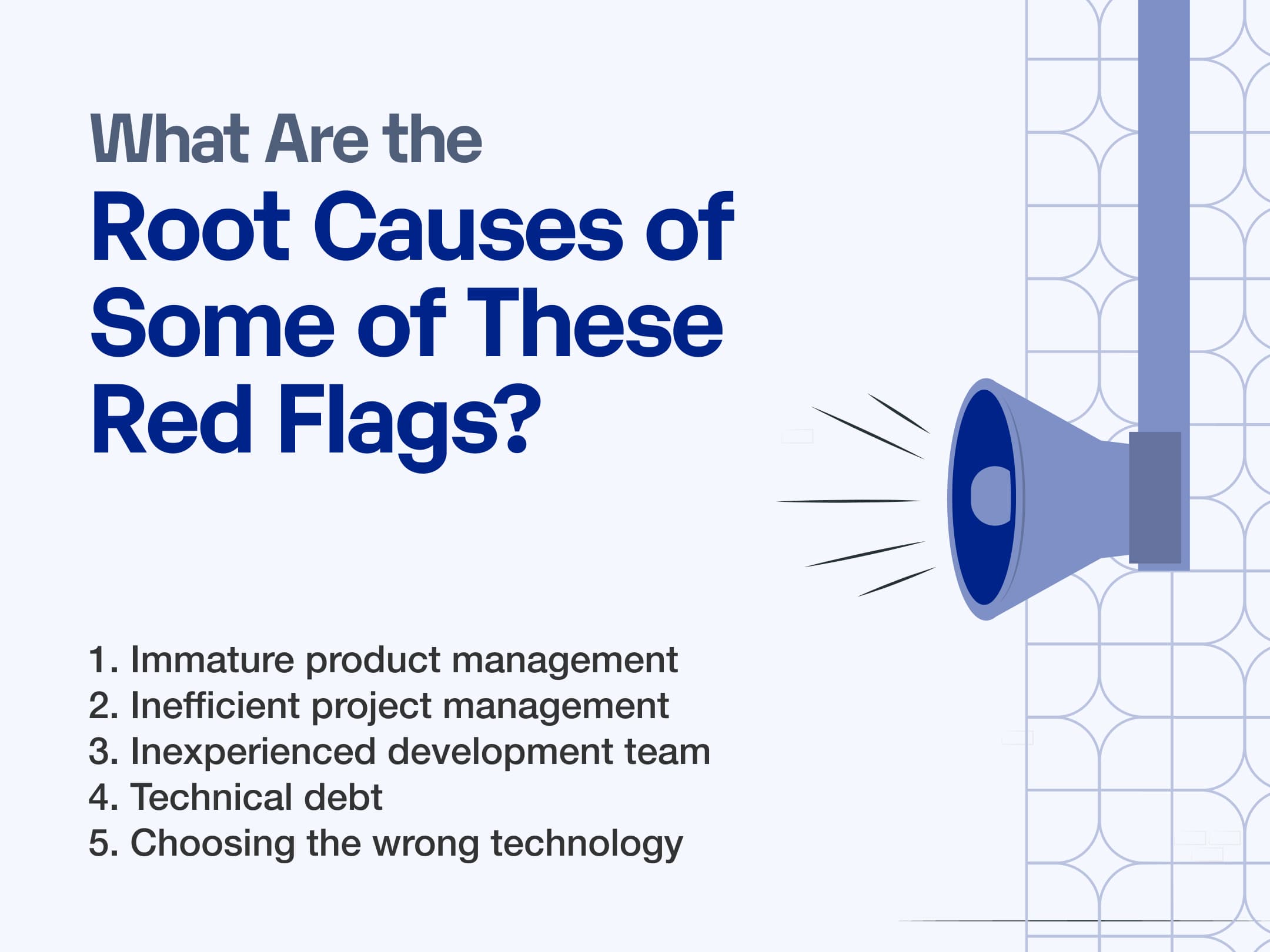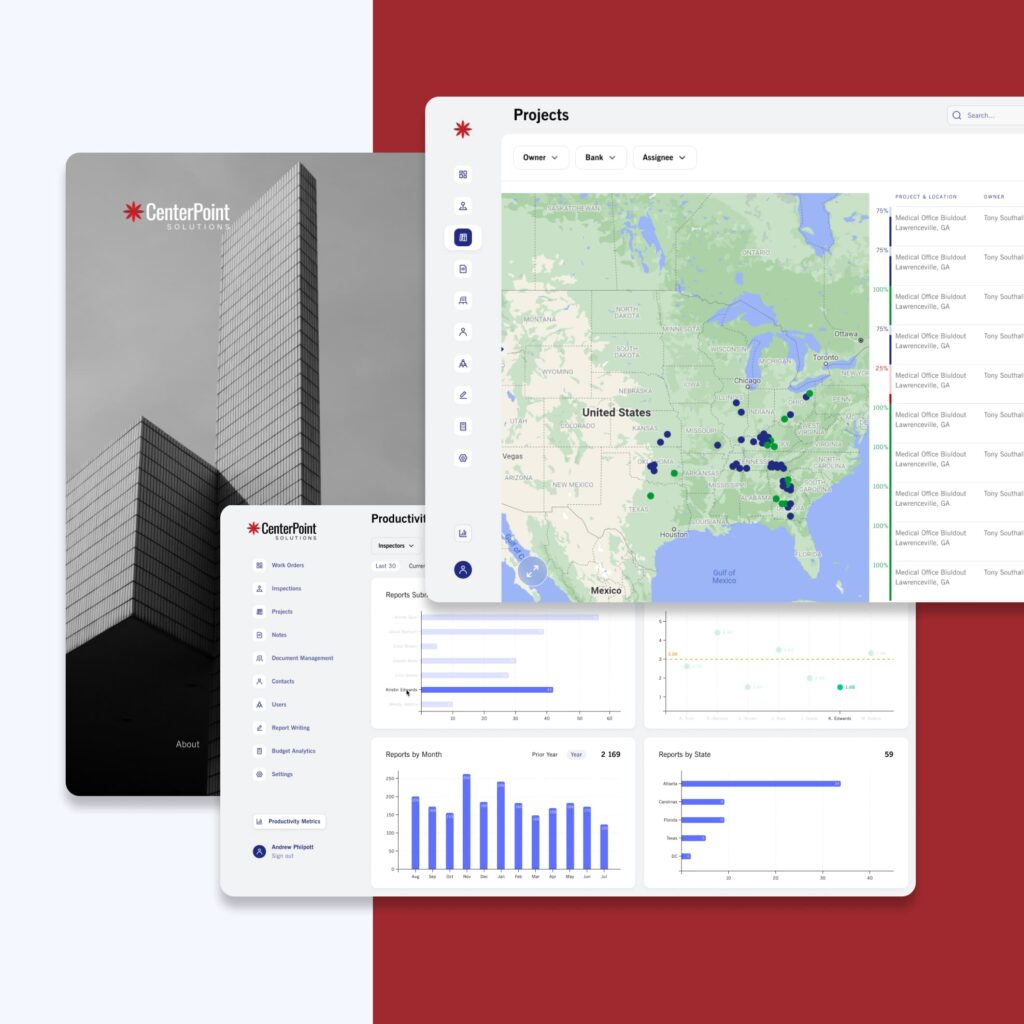Blog
The 7 Red Flags That Indicate a Need for Change in Your Software Development Team

Introduction
The backbone of any successful software product today isn’t just the code itself but the team behind it. A good development team be it in-house or outsourced could be the difference between robust software and a failed project
The SaaS space today has become very competitive and even saturated. The rise of no-code tools is also allowing people to quickly build and release products faster than ever.
This means that competition has also become cutthroat, users will leave your app for the slightest inconvenience.
It is therefore paramount that as a company founder or tech lead, you are doing everything you can to make sure you’ve got a team that can deliver exactly what your users want and need.
However the journey to maintaining an in-sync team is not always smooth, and in today’s article we will discuss some of the red flags that you may start to see that indicate that you may need to consider a change in your software development team.
We will also discuss the underlying cause of these red flags and how you can solve them
The Constant Firefighting Syndrome

The role of a founder at a software company or a tech lead extends beyond managerial duties or setting the vision. They’ve got to be the primary link between the development team and other external stakeholders.
Ideally, this role should involve strategic decision making allowing the founder and even the tech leads to focus on more income-generating tasks for the company however, these leaders find themselves in a state of ‘hand-holding’’ and even perpetual crisis management.
This is the “constant firefighting syndrome”
Imagine a situation where instead of focusing on how to scale your company your day-to-day revolves around addressing immediate software failures, managing disgruntled users, and managing the constant occurrence of bugs.
This will eventually lead to stagnation and will stifle the growth of the company.
What are some of the constant firefighting effects on a team?
- Operational Stagnation – When time is being spent on dealing with occurring issues like constant bugs the whole team has no time to focus on growth and the long-term vision of the company
- Team Morale and Burnout – Nobody likes working on the same tasks over and over again. This can affect the morale of the team and lead to burnout
- User Trust and Retention – Today’s software space is very competitive, and if users keep getting frustrated by your app, they will quickly move to your competition.
- Resource Drain – Spending time and energy on immediate and repetitive tasks can be resource-draining, resulting in missed opportunities on potentially revenue-generating projects and features.
In the next section, we will explore the 7 red flags that indicate a need for change in your software development team, whether they be in-house or outsourced.
Scale your development and software with confidence!
Master strategy, roadmap, and code execution and start to ship more on each sprint.
The 7 Red Flags
Let’s face it, software development is not a straightforward process, there are always going to be challenges to be faced.
However, there are some persistent issues that may signal deeper issues with your development team that need to be addressed.
Here are seven red flags that indicate an imminent need for change in your team
1. Crucial Features Being Down
When your crucial features are always down then you know you’ve got a big problem. Software bugs are part of software development however if it’s a recurring issue then it needs to be addressed.
Such recurring issues disrupt the user experience and indicate potential lapses in quality assurance or architectural flaws.
2. Piling Client Support Emails
A very good indicator of a struggling application is the number of support tickets that your customer service team has to deal with.
A rise in support tickets especially those about app malfunctions and bugs points to an issue with the codebase that needs to be addressed.
3. Slow Software as the User Base Increases
The success of your software or app should propel you forward and not be a drawback. If you start to see your app or software start to slow down as you increase your user base, this points to a scalability issue.
4. The Bug Domino Effect
The bug “domino effect” is when you fix one bug and then another one pops. This is an indicator of a fragile codebase and you may have inexperienced developers on your team.
This “domino effect” can lead to an endless cycle where your app never really gets to grow because you’re always fixing problems instead of exploring areas of growth.
5. Daily Damage Control
As we pointed out earlier, your role as a founder or tech lead should be focused on exploring areas and opportunities for growth and not placating disgruntled users and coaxing developers to address an ever-growing bug list.
If your day to day is revolves around daily damage control then you need to think about a change and soon.
6. The Absence of a Clear Product Roadmap
A software project without a clear product roadmap is like a ship setting sail without a compass. If projects seem to have little to no clear direction and things are ‘ready when they are ready’ then that is a huge red flag that people can sometimes face with an outsourced team.
7. Missed Developer Deadlines
While occasional delays are unavoidable in software development the problem arises when the developers themselves are constantly giving certain time frames without a reason for them.
At Trustshoring, we’ve talked about how to get better project estimates from your developers.
We always like to advise our clients to set an environment that allows them to ask the reason behind each estimate allowing for a collaborative space where risks are assessed and estimates then become clearer.
When deadlines are consistently missed, then this points to either over-promising, underestimating tasks, or the lack of necessary skills or resources.
The Underlying Problems Behind the Red Flags
In this section, we will explore the underlying problems behind these seven red flags so as to give you an indication of what is going wrong and how to fix it.
A. The Symptomatic Codebase
When any foundation is shaky then the entire structure built on it becomes vulnerable. Software is no different – A software product’s foundation is its codebase.
The snowballing effect of a bad foundation can lead to recurring bugs and integration challenges.
As these problems accumulate, they become harder and harder to manage as you progress much like a snowball growing in size and momentum.
The time and effort that it takes to deal with growing problems diverts resources that could otherwise be diverted to growth and innovation.
B. Inexperienced Developers
Every team will and should have a mix of senior and experienced developers and some junior developers in order to keep and maintain fresh perspectives and enthusiasm.
What we normally see is a situation where a company starts with a junior and inexperienced team during the development of their MVP and fails to add on to that experience as the app, software, and company grow.
Junior developers while adaptable and eager to learn, lack the seasoned experience needed to handle the complex project situations that come with the growth of software, apps, and companies.
As your software starts to scale, your team should follow suit so it’s important to always have more senior developers in your team.
C. Lack of Effective Project Management
Project management practices are there to lead a project from start to finish, ensuring alignment with objectives and optimal use of resources.
Without a guiding hand, chaos is sure to ensue leading to some of the red flags we’ve already discussed.
A lot of effective project management practices will lead to scope creep, misaligned efforts, and missed deadlines. Remember that a clear roadmap is also part of project management best practices when it comes to software development
Diagnosing the Root Causes
Let us have a look at the root causes of these red flags and how you can begin to address them.

1. Immature Product Management
Effective product management helps you understand user needs, and market dynamics and then translate them into a great product vision.
Product management means that you prioritize the right things to build, the customer journey is clear and understood by every member of the team, and the documentation is crystal clear.
To solve this issue, it’s important to start with user research and understand who your customer is.
This should be conducted with the whole team (everyone involved with the product) for a holistic understanding throughout the company.
This will allow you to sketch out a product vision that will guide your development efforts going forward.
2. Inefficient Project Management
We’ve discussed what a lack of project management practices can do to the overall success of your software projects leading to scattered efforts, misled objectives, and an overall waste of resources.
So how can you solve this issue?
Implement project management methodologies that are up to date and that every member of the team can get behind.
Remember, each of these solutions will not work if you just force everyone to go along with it. It has to be a collective team effort especially when it comes to implementing various best practices.
Another solution here is to have regular check-ins like daily standups to make sure everyone is in sync and people have an opportunity to raise questions or concerns.
Finally, make sure you clearly define the roles and responsibilities of each member of your team which will help foster accountability.
3. Inexperienced Development Team
A team lacking the necessary experience and skills can overlook critical details or struggle with complex tasks.
To solve this problem, you have to set up a mentoring relationship in your development teams. Pair junior developers with more senior team members to provide guidance and foster skill enhancement.
It is also important to invest in the development of your team members and this should be throughout the organization.
Is there a course your teams think would help make them better developers? Ask them and try and support them to enhance your team skills.
Finally, hire strategically. As we mentioned earlier, it’s always important to make sure that your team is comprised of more senior-level developers, while still keeping a healthy balance of mid-level and junior engineers.
4. Technical Debt
Technical debt can be described as the result obtained from prioritizing speed over the quality of the code, which normally happens in the early stages of development when you are trying to get your product out as quickly as possible.
Just like bugs, sometimes this cannot be avoided, however, too much of it can erode the quality of your product and bring a lot of problems down the road where you get cases where even new hires do not want to work on your product because of the excess technical debt accumulated.
To solve this issue, it’s important to implement regular code reviews to identify and address inefficiencies and vulnerabilities as early as possible.
You can also dedicate specific sprints to addressing technical debt and finally, maintaining detailed documentation of known issues and their solutions to prevent reoccurrence.
5. Choosing the Wrong Technology or Platform
Finally, the reason why you may be experiencing these issues is due to outdated or mismatched tech choices that lead to slow performance, integration issues, and prolonged development cycles.
This can be an issue, especially today with the massive shifts we are seeing in development tech and even methodologies.
As a tech lead of the founder, you have to ask yourself if your team is in tune with the latest tech methodologies and development practices.
Regularly review and assess the tech stack to ensure it aligns with project needs and industry standards. Before committing to technology, make sure you run pilot projects to test the suitability for the project requirements
Finally, encourage your teams to stay up to date with the latest tech advancements to make sure that your company is always making informed tech choices.
Conclusion
As we’ve explored, the challenges faced by development teams often stem from foundational issues in product and project management, team composition, and accumulated technical debt.
By implementing proactive strategies like regular stakeholder engagement, comprehensive documentation, mentorship, continuous improvement, and tech stack audits, teams can not only address these challenges but also create an environment where innovation and continuous improvement are natural.
Finally, remember that communication is also king here. If your teams don’t feel comfortable enough to come to you as the founder or tech lead and talk about issues then you will always struggle to deliver unmatched value to your user base.
Are you interested in learning more about your development team and how to build a high-performing team? Get in touch with us today!
Read more


Case study:
Centerpoint Solutions
How Centerpoint grew to manage 500 commercial construction projects per month in 12 mo...

What is the Average Software Developer Salary: the USA vs Eastern Europe

How to Hire Developers in Eastern Europe for a Startup

Why You Should Build an MVP

Optimizing Your SaaS: How to Align Tech and Product Teams for Goal Achievement
Create a free plan for growth
Speak to Victor and walk out with a free assessment of your current development setup, and a roadmap to build an efficient, scalable development team and product.
“Victor has been great. Very responsive and understanding and really knows his stuff. He can go the extra mile by tapping into his prior experiences to help your company out. Really enjoyed working with him.”
Founder of Agency360

Victor Purolnik
Trustshoring Founder
Author, speaker, and podcast host with 10 years of experience building and managing remote product teams. Graduated in computer science and engineering management. Has helped over 300 startups and scaleups launch, raise, scale, and exit.